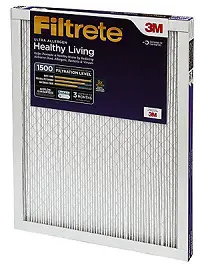As if they weren't despised enough already, cockroaches are now being recognized as a growing cause of indoor allergies. There are no reliable figures on how many people are allergic to the critters, but studies suggest that many inner-city allergy sufferers and asthmatics are sensitive. Millions of Americans may be affected. Some allergists, including Platts-Mills, fear roaches may be partly to blame for the rising incidence of asthma in urban areas. Rhinitis and skin rashes may also occur. In rare cases the allergy can be fatal.
Researchers are working to identify the specific cockroach proteins that cause the reaction. In the meantime, people who think they may be allergic can be skin-tested by an allergist.
While they are most prevalent in the inner city, cockroaches also thrive in suburban apartment buildings and may even colonize individual homes, especially in warm climates. One study in Florida found single apartments with more than 13,000 of the pests. However, roach allergy may actually be a bigger problem in the northern states, says Bann C. Kang, M.D., chief of allergy and immunology at the University of Kentucky Medical Center in Lexington. The reason: Long, cold winters keep roaches and people cooped up inside with windows shut, exposing inhabitants to high levels of allergens. The insects, notes Kang, can also infiltrate public buildings--factories, dormitories, hospitals, restaurants, day care centers and motels.
The ultimate "roach motel" is a building near the University of Florida in Gainesville. Cockroaches are the only guests, but they pay the price of being spied on by Richard Brenner, Ph.D., an entomologist for the U.S. Department of Agriculture. The building is equipped with sensors that allow Brenner to monitor temperature, humidity, air flow, allergen concentrations and roach activity. Already Brenner has discovered that cockroaches benefit from the same warm, humid conditions that have allowed dust mites to flourish. That's one reason researchers think roach populations are rising. Another is that most species have few natural enemies in America because they originated in Africa or Asia, arriving here only in the last two centuries on slave and other trade ships.
Unfortunately, cockroaches have become resistant to many pesticides; these chemicals may aggravate allergy symptoms as well. So Brenner has developed a more benign (to humans, anyway) approach to extermination: a poison bait roaches find irresistible. The toxins in these baits are micro-insulated and are released only when roaches chew on them. Brenner expects the new bait to be marketed next year. Also on the horizon: a nontoxic repellant that cockroaches find so repugnant they stay away, and an attic vent designed to let cool, dry air from outside into the spaces where roaches thrive. Deprived of moisture, the insects either dry out and die or strike out in search of more hospitable quarters. Until such products and devices reach the market, experts recommend that you control moisture by fixing leaky pipes and not leaving dirty dishes soaking overnight.
You may also want to check out the allergies produced by dust mites; and learn about the control measures available, such as enclosing the mattress top and sides with a plastic cover or other dust mite impervious cover (available here), thoroughly vacuuming mattress pillows and the base of the bed. Put an airtight plastic or polyurethane cover over your mattress. This tip is number one for a reason: it is in your bed that you are closest to the mites and their feces and enclosing the mattress and pillows in a dust mite cover virtually eliminates the mites here. There are allergy controls, like the dustmite-proof fitted sheets. Mattresses covered with "fitted sheets" help prevent the accumulation of human skin scales on the surface.
A number of researchers, like those at the University of Nebraska, have studied control measuresand have a set of recommendations that are proven to be effective. Recommendations focus on "dust control." One must reduce the concentration of dust borne allergens in the living environment by controlling both allergen production and the dust which serves to transport it. For the bedroom environment you will want to use some or all of the following methods. Many dustmite measures also work well for cockroach allergans. We have listed them in order of practicality combined with effectiveness.:

Ways to save money AND help the environment:
Eat healthier AND save money: Instant Pot Duo Crisp 11-in-1 Air Fryer and Electric Pressure Cooker Combo with Multicooker Lids that Fries, Steams, Slow Cooks, Sautés, Dehydrates
Save water AND money with this showerhead adapter, it lets the water flow until the water is hot, then shuts off water flow until you restart it, ShowerStart TSV Hot Water Standby Adapter
Protect your health with these:
Mattress Dust mite-Bedbug protector, 100% Waterproof, Hypoallergenic, Zippered
Handheld Allergen Vacuum Cleaner with UV Sanitizing and Heating for Allergies and Pet, Kills Mite, Virus, Molds, True HEPA with Powerful Suction removes Hair, Dander, Pollen, Dust,
Immune Support Supplement with Quercetin, Vitamin C, Zinc, Vitamin D3
GermGuardian Air Purifier with UV-C Light and HEPA 13 Filter, Removes 99.97% of Pollutants
5 Stage Air Purifier, Features Ultraviolet Light (UVC), H13 True Hepa, Carbon, PCO, Smart Wifi, Auto Mode, Quiet, Removes 99.97% of Particles, Smoke, Mold, Pet Dander, Dust, Odors
Interesting Reads:
THE PREPPER'S CANNING & PRESERVING BIBLE: [13 in 1] Your Path to Food Self-Sufficiency. Canning, Dehydrating, Fermenting, Pickling & More, Plus The Food Preservation Calendar for a Sustainable Pantry
The Backyard Homestead: Produce all the food you need on just a quarter acre! Paperback
The Citizens' Guide to Geologic Hazards: A Guide to Understanding Geologic Hazards Including Asbestos, Radon, Swelling Soils, Earthquakes, Volcanoes
The Uninhabitable Earth: Life After Warming
Book: The Sixth Extinction: An Unnatural History Paperback